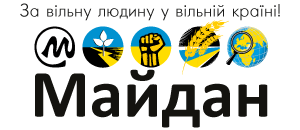версія успішного подалання марксистського перевороту(л)
04/28/2009 | Сергій Кабуд
Almost immediately after the military's seizure of power, the junta banned all the leftist parties that had constituted Allende's UP coalition. All other parties were placed in "indefinite recess," and were later banned outright. The government's violence was directed not only against dissidents, but also against their families and other civilians.
The Rettig Report concluded that 2,279 persons who disappeared during the military government were killed for political reasons or as a result of political violence, and approximately 31,947 tortured according to the later Valech Report, while 1,312 were exiled.
The latter were chased all over the world by the intelligence agencies. In Latin America, this was made in the frame of Operation Condor, a cooperation plan between the various intelligence agencies of South American countries, assisted by a United States C.I.A. communication base in Panama. Pinochet believed these operations were necessary in order to save the country from communism
--------------------
By mid 1975, Pinochet set forth an economic policy of free-market reform.
He declared that he wanted
"to make Chile not a nation of proletarians, but a nation of proprietors."
To formulate his economic policy, Pinochet relied on the "Chicago Boys", who were economists trained at the University of Chicago and heavily influenced by the monetarist ideas of
Milton Friedman, Arnold Harberger, and Friedrich Hayek.
Pinochet launched an era of deregulation of business and privatization of state-owned companies.
To accomplish these objectives, his government abolished the minimum wage, removed artificially lowered food prices, rescinded trade union rights, privatized the pension system, and reprivatized state-owned industries, banks, and lowered taxes on income and profits.
However, the large copper industry, nationalized mainly by Allende, remained under control of the government owned enterprise Codelco. A percentage of its income was assigned by a specific law to the Chilean Armed Forces' budget.
Supporters of these policies (most notably the late Nobel laureate from the University of Chicago School of Economics, Milton Friedman himself), have dubbed them "The Miracle of Chile," due to the country's sustained economic growth since the late 1980s.
While the 1980s have been described as the "lost decade" in terms of economic development for the rest of Latin America, since global recession in the early 1980s
Chile's economy under Pinochet has enjoyed a sustained strong expansion.
His government implemented an economic model that had three main objectives:
-economic liberalization,
-privatization of state owned companies, and
-stabilization of inflation.
In 1985, the government started with a second round of privatization, it revised previously introduced tariff increases and gave a greater supervisory role for the Central Bank.
While in the mid-1980s 45 percent of population was still living under poverty level, by 1992 the unemployment had declined to below 5 percent and the growth of GDP averaged 6.2 percent a year.
Pinochet's market liberalizations have continued after his death, led by Patricio Aylwin.
The Rettig Report concluded that 2,279 persons who disappeared during the military government were killed for political reasons or as a result of political violence, and approximately 31,947 tortured according to the later Valech Report, while 1,312 were exiled.
The latter were chased all over the world by the intelligence agencies. In Latin America, this was made in the frame of Operation Condor, a cooperation plan between the various intelligence agencies of South American countries, assisted by a United States C.I.A. communication base in Panama. Pinochet believed these operations were necessary in order to save the country from communism
--------------------
By mid 1975, Pinochet set forth an economic policy of free-market reform.
He declared that he wanted
"to make Chile not a nation of proletarians, but a nation of proprietors."
To formulate his economic policy, Pinochet relied on the "Chicago Boys", who were economists trained at the University of Chicago and heavily influenced by the monetarist ideas of
Milton Friedman, Arnold Harberger, and Friedrich Hayek.
Pinochet launched an era of deregulation of business and privatization of state-owned companies.
To accomplish these objectives, his government abolished the minimum wage, removed artificially lowered food prices, rescinded trade union rights, privatized the pension system, and reprivatized state-owned industries, banks, and lowered taxes on income and profits.
However, the large copper industry, nationalized mainly by Allende, remained under control of the government owned enterprise Codelco. A percentage of its income was assigned by a specific law to the Chilean Armed Forces' budget.
Supporters of these policies (most notably the late Nobel laureate from the University of Chicago School of Economics, Milton Friedman himself), have dubbed them "The Miracle of Chile," due to the country's sustained economic growth since the late 1980s.
While the 1980s have been described as the "lost decade" in terms of economic development for the rest of Latin America, since global recession in the early 1980s
Chile's economy under Pinochet has enjoyed a sustained strong expansion.
His government implemented an economic model that had three main objectives:
-economic liberalization,
-privatization of state owned companies, and
-stabilization of inflation.
In 1985, the government started with a second round of privatization, it revised previously introduced tariff increases and gave a greater supervisory role for the Central Bank.
While in the mid-1980s 45 percent of population was still living under poverty level, by 1992 the unemployment had declined to below 5 percent and the growth of GDP averaged 6.2 percent a year.
Pinochet's market liberalizations have continued after his death, led by Patricio Aylwin.
